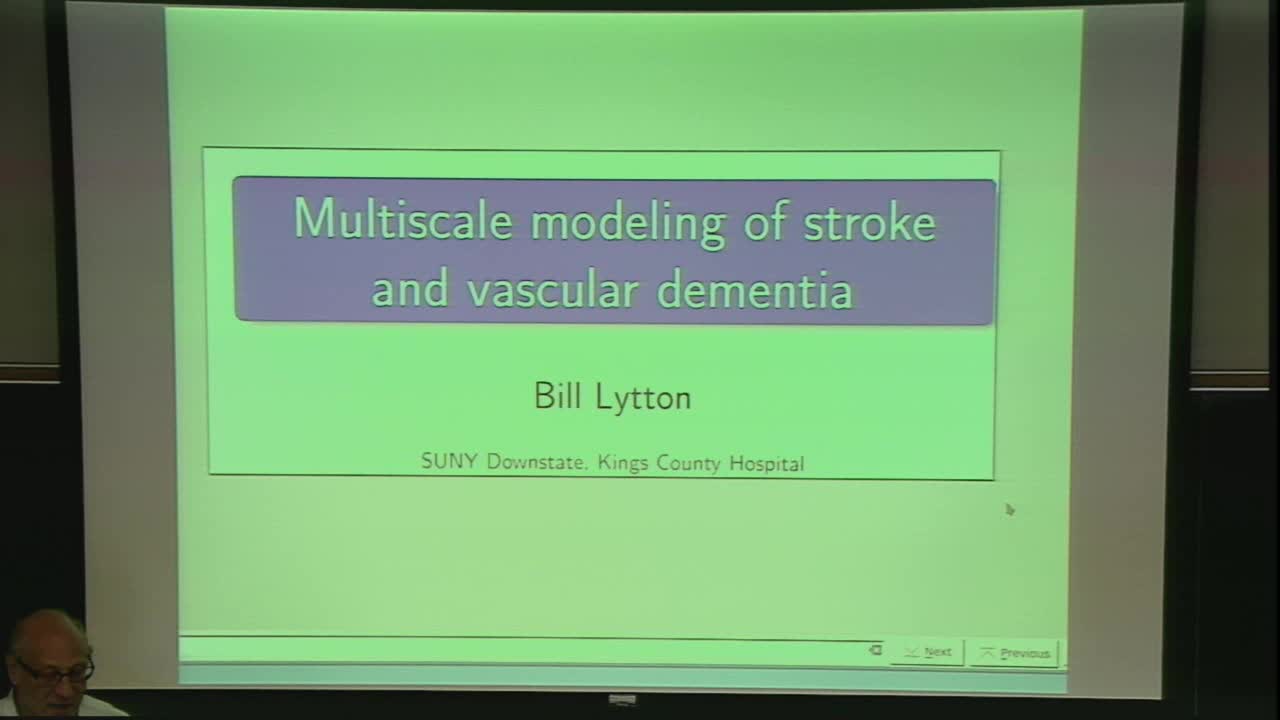Multiscale modeling of stroke and vascular dementia
Presenter
February 14, 2018
Keywords:
- Alzheimer, Ischemia, Spreading Depression, Excitotoxicity, Neurovascular unit
Abstract
Multiscale modeling has arisen as a focus of computational systems biology, with the realization that genome, proteome, connectome, etceteromes, can become comprehensible only when placed in the context of explicit computer simulations. Measurements and activity patterns at one scale must be understood dynamically in the context of patterns at higher and lower scales. Nowhere is this more apparent than in the domain of brain ischemia, where manipulations at molecular levels are used, so far unsuccessfully, to protect cells that are otherwise at risk of death. Severe sudden ischemia, a stroke, produces an ischemic core where cells are doomed, and an ischemic penumbra where cells are at different levels of risk. We hypothesize that the spread of different toxic agents (potassium, reactive oxygen species, glutamate and others) will produce different types of ischemic penumbrae, depending on multiple factors: distance from the core, degree of local ischemia, proportion of apoptotic vs necrotic damage at the core (related to rate of stroke onset), and effects of neighboring penumbral areas. Developing a taxonomy of penumbrae will assist in developing a variety of neuroprotective strategies to assist in saving tissues at different locations and at different times following the stroke. In contrast with stroke, the chronic ischemia that contributes to dementia is characterized by the spread of toxic substances and malign influences spreading intracellularly. Here we expect that volume/area ratios and the effects of endoplasmic reticulum in different sizes and type of dendrites might play a crucial role in determining differential degrees of damage.
